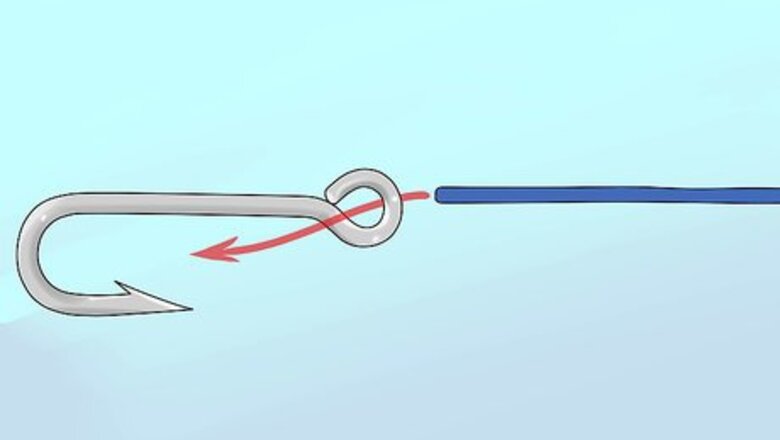
views
Traditional Snell Knot
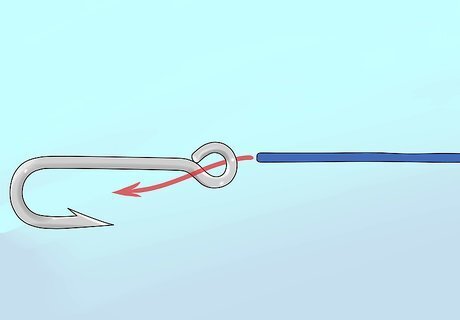
Thread the line through the hook’s eye and toward the shank. Pinch the line near the leading end and feed it through the eye opening. Pull the line through until it’s a few inches longer the length of the shaft, or at least 6–8 in (15–20 cm). Some anglers contend that you should always thread the line through “front to back”—that is, insert the line on the side of the eye that is on the same side as the hook’s barbed tip. This may keep the hook in better alignment with the line when it’s in the water.
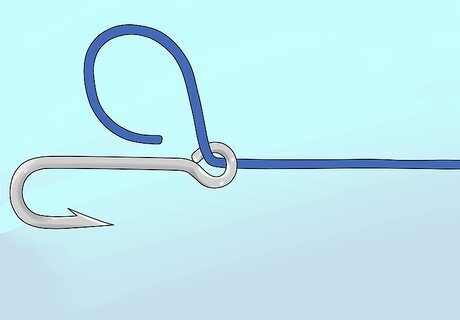
Form a single, large loop. Bring the leading end around so that it’s on the same side of the eye as where you first inserted the line. You’re basically creating a letter “O” with the line.
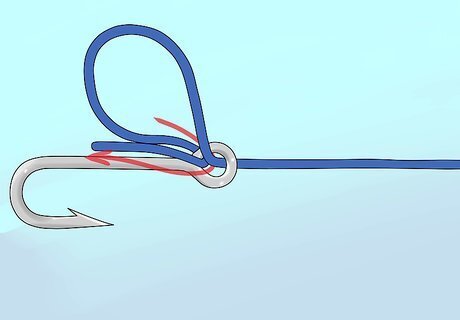
Thread the leading end through the eye again. Feed it through in the same direction as before. Thread about 2 in (5.1 cm) of line through the eye this time. If you went “front to back” the first time through the eye, do so again this time.
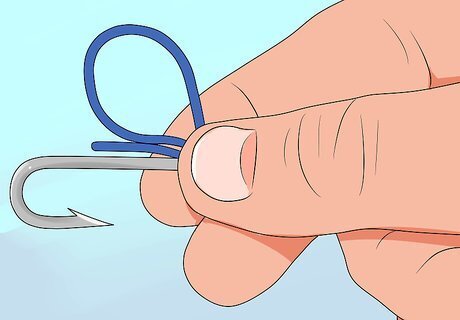
Pinch the hook eye and line with your thumb and forefinger. Pinch right over the hook eye. With this pinch, hold on to both the part of the line that runs through the hook eye and the part that extends away from the hook (the standing end). Below your pinched fingers, around 2 in (5.1 cm) of the leading end of the line should be running alongside the hook shank (the straight portion of the hook). The loop you created should also be below your pinched fingers.
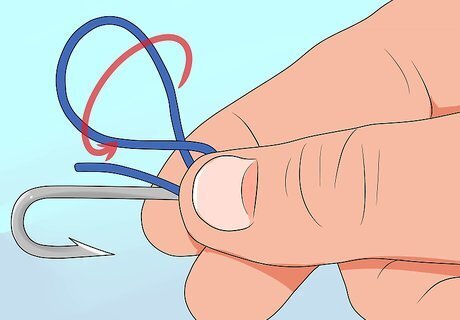
Twist the loop to wrap it around the hook shank and leading end. With your free hand, grasp the loop and twist it clockwise. This will wrap the base of the loop (nearest to your fingers over the hook eye) around both the hook shank and the leading end that extends alongside the shank. Try to make a fairly tight coil around the hook shank and leading end. This will make it easier to tighten the entire knot at the end. Once you finish the coil, slide your pinching fingers down a bit to hold it in place as well. The loop will shrink in circumference as you wrap it around the hook shank and leading end.
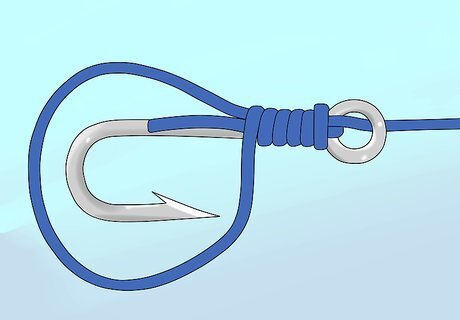
Wrap the loop around 6-7 more times. Create 7-8 total coils around both the hook shank and leading end. Keep sliding your pinching fingers down to cover over each coil you make. You’re essentially making a noose, with the hook shank being wrapped by the noose coils. When you’re done wrapping, the goal is to have the remaining loop be roughly the size of the hook eye. There also needs to be a roughly 0.5 in (1.3 cm) stub of the leading end extending below the coils. With practice, you’ll be able to create loops that are just the right size to wrap around the shank 7-8 times. If you can only manage 5-6 coils, your knot will probably hold. If you need to create more coils to use up the loop, that’s fine as well—but it won’t make the knot any stronger.
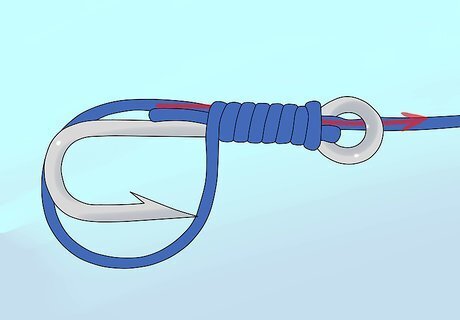
Pull the standing end away from the hook to shrink the loop. Maintain a light but secure pinch grip over the 7-8 coils, but release pressure over the hook eye. Pull slowly on the standing end of the line with your free hand, and any slack remaining at the end of the loop will disappear. Maintain your grip on the standing end of the line for the next move.
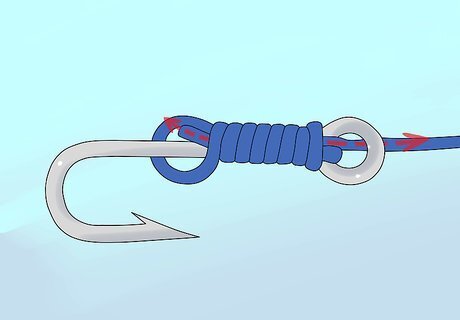
Pull both the standing and leading ends to secure the knot. Keep holding the standing end with one hand, and slide your pinching fingers down to grip only the stub of the leading end that’s below the coils. Tug on each end simultaneously to draw the coils tight and secure the knot. You may want to lubricate the line by dipping it in water or spitting on it before doing this. Lubricating the line will make tightening it easier by reducing friction along the coils.
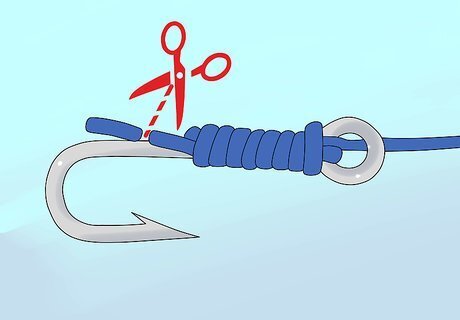
Trim the tag end, if necessary. If there’s more than about 0.5 in (1.3 cm) of the leading end sticking out below the coils, go ahead and trim it off with small scissors or fingernail clippers. Otherwise, just leave the stub alone.
Easy Snell Knot
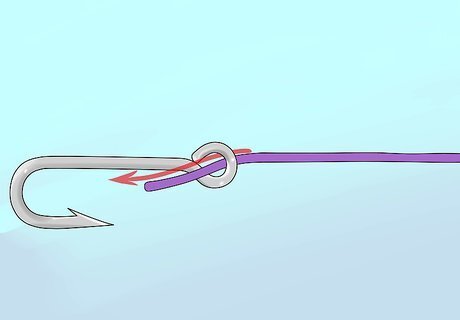
Feed the line through the hook’s eye and along the shank. Pass about 6 in (15 cm) of the leading end of the line through the eye, or a length that’s twice that of the hook—whichever is longer. It’s up to you which side of the eye to feed the line into, although some people say using the same side as the tip of the hook provides better fishing results. The “eye” is the closed loop at one end of the hook, and the “shank” is the straight portion of the hook (below the eye and above the curved section). Be careful not to hook yourself while tying any type of snell knot!
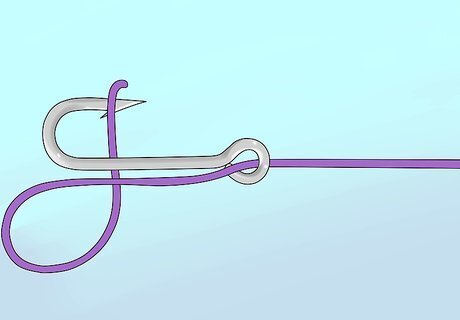
Create a small loop and run the leading end under the shank. Keep the line alongside the hook shank about to the point where the curve of the hook starts. At that point, create a loop that is directed away from the curve of the hook. Feed the end of the line (also the end of the loop) underneath both the shank and the line itself, again at the point where the curve of the hook begins. Run about 4 in (10 cm) of excess line under the shank.
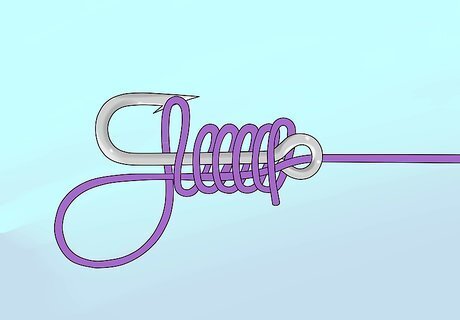
Wrap the 4 in (10 cm) leading end around the shank 5-7 times. Make fairly tight coils that don’t overlap, and go around both the shank and the section of line that runs alongside it. Fewer than 5 wraps won’t make a tight enough knot, while more than 7 starts to become overkill (that is, the line will break before the knot will give regardless). Consider 7 wraps to be the “magic number.”
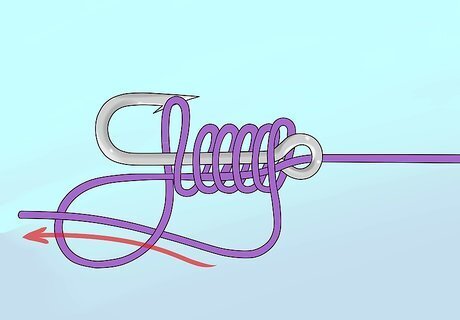
Feed the remainder of the leading end back through your loop. After creating 5-7 fairly tight coils, you should have enough free line left to thread through the loop you created earlier. If not, undo 1-2 coils (at the risk of weakening the knot) or, better yet, undo the entire knot and start over. You only need about 0.5–1 in (1.3–2.5 cm) of the leading end to pass through the loop this time; it’s OK if you have more.
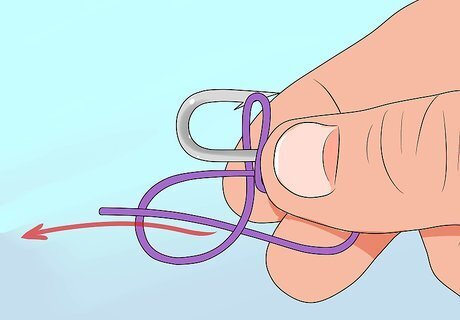
Pull on the leading end while lightly pinching the coils. Use the thumb and forefinger of one hand to keep the coils from unraveling, but don’t pinch them too tightly. With the other hand, pinch the leading end that has passed through the loop and give it a steady tug. Pulling the leading end will tighten the coils against the shank. However, if you don’t pinch the coils, they’ll unravel, and if you pinch them too tight, you won’t be able to pull the leading end. Light pinching pressure is all that’s needed.
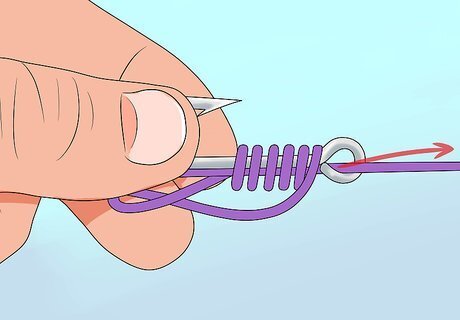
Pull the leading and standing ends of the line to tighten the knot. Slide your pinching fingers from the coils up to the standing end of the line, just beyond where it enters the hook’s eye. Maintain your grip on the leading end with your other hand. Pull firmly on both ends of the line at the same time. This will bring the coils in as tight as possible. As you tighten them, make sure the coils remain side-by-side and don’t overlap. If they do, loosen the coils a bit, reposition them as needed, and re-tighten them. The coils may tighten more easily if you moisten them a little, either by dipping them in water or spitting on them.
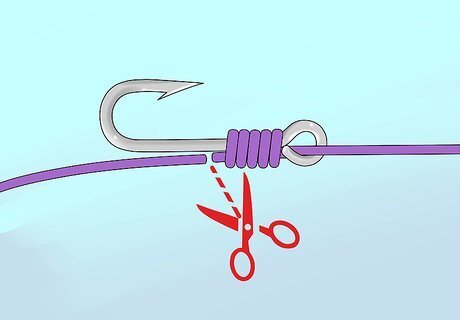
Clip the excess leading end to finish the knot. Use small scissors or fingernail clippers to snip off the section of line sticking out below the coils. This isn’t necessary if there’s less than about 0.5 in (1.3 cm) of excess line, however.
Snell Uni-Knot

Thread the line through the hook eye and down the hook shank. Run the line through to at least the length of the entire hook, if not 1–2 in (2.5–5.1 cm) longer. You may end up with better line-hook alignment in the water if you feed the line into the front side of the eye—that is, the same side as the sharp tip of the hook.

Bend the leading end around to form a loop. Create the loop on the opposite side of the shank from the curve of the hook. While keeping the loop on this side, extend about 2 in (5.1 cm) of the leading end of the line over the top and to the other side of the hook’s shank. Keep the part of the standing end of the line that you fed through the eye next to the hook shank. Pass the leading end over top of this along with the shank. Just a reminder—the “leading end” is the end of the line that you create the loops and coils with, while the “standing end” is the opposite end of the line. The leading end is sometimes also called the “tag end.”
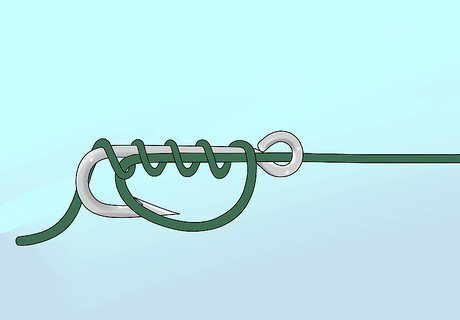
Thread the leading end around the shank 4 to 6 times. Each time, feed the leading end into the loop and back out, thereby wrapping it over both the hook shank and the section of line that’s alongside the shank. Be sure the coils you create are fairly snug against each other as you do this. You need at least 4 coils to make an adequately-strong knot, while making more than 6 won’t provide much added benefit. After making the coils, feed the excess line on the leading end (at least 1 in (2.5 cm) in length) through the loop once more.
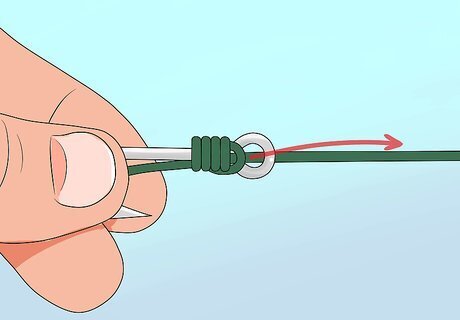
Slide the coils toward the eye while lightly pulling on the line. Grip the standing end with one hand, and use your other hand’s thumb and middle finger to grab the leading end that has passed through the loop. As you lightly pull on each end of the line, use your free index finger to nudge the coils against the base of the hook’s eye. Don’t let the coils bunch up, however; keep them side-by-side instead of overlapping.
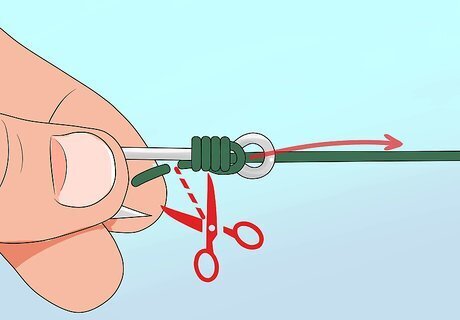
Pull the knot tight and trim any excess line. Once the coils are in place just below the eye, pull forcefully on the leading and standing ends at the same time. This will secure the knot. If there is more than about 0.5 in (1.3 cm) of the leading end sticking out, trim it with small scissors or fingernail clippers. Try dipping the coils in water or wetting them with saliva to make pulling them tight easier.


















Comments
0 comment